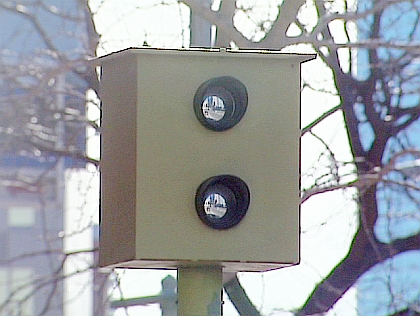Thousands more reckless drivers are getting caught speeding near schools thanks to the additional speed cameras that started going up in school zones this summer, according to city data.
But the preliminary numbers also suggest that drivers are learning their lessons after getting slapped with tickets — proof that the safety measure works and will save lives, according to a Brooklyn state pol whose bill gave the city the green light to install roughly 600 more cameras than the 140 in operation since 2014.
“Speed cameras work. Period. They change driver behavior and cause people to slow down, protecting New Yorkers from injury and death in traffic collisions,” State Senator Andrew Gounardes said in a statement to Streetsblog on Monday.
Software engineer by day and data analyst and safe-street advocate by night, Jehiah Czebotar, created an easy-to-read chart that shows just how many more drivers have been issued speeding in school zone tickets since the early summer expansion of the speed-camera program, when the number of school-zone camera systems allowed in the city increased from 140 to 750.
“It's incredible how fast some vehicles are getting speed camera violations” said Czebotar, whose analysis is pulled from the city’s own Open Parking and Camera Violations data.
On July 11, the expansion of the life-saving school-zone camera program went into effect with the city starting the process of installing 40 more cameras each month through 2019, increasing to 60 camera systems per month to reach the maximum by next June. And like clockwork, Czebotar's chart shows a spike that very week in July, when drivers racked up roughly 25,000 violations per day — a whopping 560-percent increase from the day before, despite just a 28-percent increase in the number of camera systems.

On July 10, just one day before the expansion, drivers received 2,612 violations; on July 11, they got 17,264; and on July 12, they got 26,091. But by the first day of school on Sept. 5, drivers were already slowing down, receiving a few hundred fewer tickets than they did months prior with just 14,702 violations, according to the city's data.
In August — the first full month that at least 180 cameras were active — drivers racked up 384,464 violations. By September, the number of tickets had dropped to 277,297, even as more cameras were coming on line.
The increase in tickets since July in due not only to the additional cameras, but also to their increased range. Previously, the 140 cameras were only active during school hours and were placed only within a quarter mile from the school door. Now, the cameras operate from 6 a.m. to 10 p.m. Monday through Friday, including summer, and can be placed anywhere within a quarter-mile radius of the school.
The $50 tickets kick in whenever a camera catches a driver going more than 10 miles per hour over the speed limit. Czebotar believes drivers are getting the message.
“Data unambiguously show drivers are slowing down,” he said. “Data show [the new cameras] have an impact and are changing driver behavior.”
And since June, more than 9,000 drivers have racked up six or more speeding tickets, according to Czebotar.
It's incredible how fast some vehicles are picking up speed camera violations (9.6k have 6+ since June) but data unambiguously shows drivers are slowing down even as new cameras come online. @HowsMyDrivingNY NY:JFC1429
— Jehiah (@jehiah) October 12, 2019
NY:HTZ7518 NY:GTS9889 NY:CWN8812 pic.twitter.com/3pmBlyO8lk
At the rate of ticket-writing in August, the cameras generated $19,223,200 (if none of the tickets was dismissed). But the school-zone cameras are not just about the cash — the faster a vehicle is moving, the more likely it is to kill someone.
And the cameras have already proven they deter people from speeding. According to a 2018 report from Department of Transportation, speeding during school hours at certain locations dropped 63 percent and injuries dropped 17 percent since 2014.
“Speed cameras have proven to be an effective tool for reducing speeding and ensuring that drivers operate their vehicles at safe speeds, which in turn reduces the likelihood of collisions,” NYPD Transportation Chief Thomas Chan said in July.
Czebotar says he has not yet calculated the most recent rate of recidivism with the additional cameras online, but the city previously calculated from 2014 to 2016 that 19 percent of plates were repeat violators.






